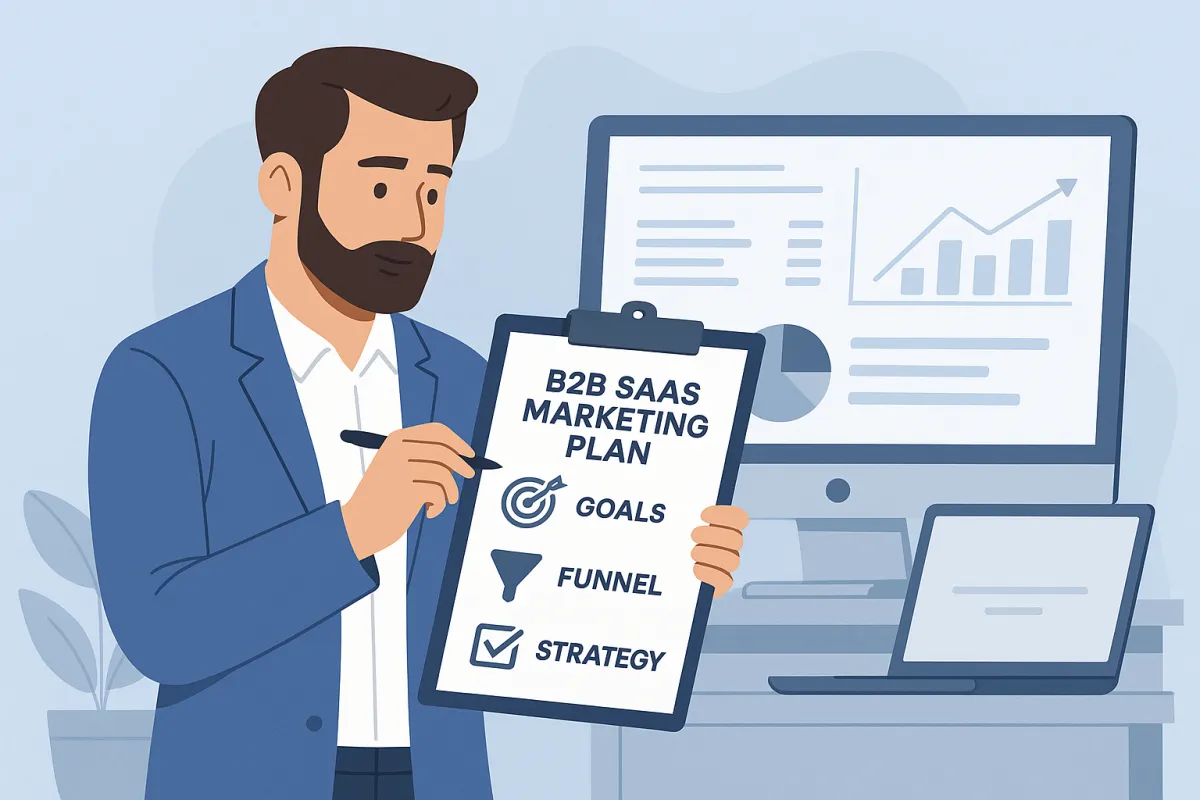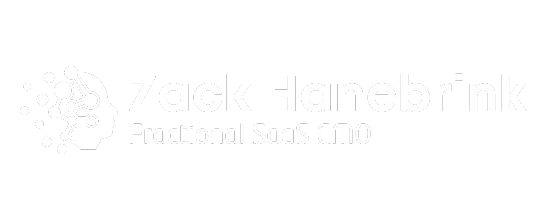
SaaS Marketing
Blog

What to Include in a B2B SaaS Marketing Plan: A Step-by-Step Guide
Creating a successful B2B SaaS marketing plan isn’t about tossing tactics at a funnel and hoping something sticks. It’s about building a clear, strategic system—one that attracts the right prospects, nurtures them through the journey, and converts them into long-term customers.
Whether you’re a founder doing it all or a growth-stage SaaS company trying to scale, this guide will walk you through what to include in your B2B SaaS marketing plan—step by step.
Why Do You Need a B2B SaaS Marketing Plan?
Without a marketing plan, you’re flying blind.
You might be running ads, writing blogs, and sending emails—but if it’s not aligned with your goals and buyer journey, you're likely wasting time and money.
A marketing plan does 3 essential things:
Creates clarity on what to do and what not to do
Aligns marketing with sales and product goals
Builds a repeatable system for predictable pipeline and revenue
As outlined at MySaaSCMO.com, a proper plan is what separates random acts of marketing from a growth engine.
What to Include in a B2B SaaS Marketing Plan
Step-by-step, using the MECE framework—Mutually Exclusive, Collectively Exhaustive.
Clear Business and Revenue Goals
Before you talk about channels or content, anchor your plan to specific business outcomes.
Ask:
What is our revenue goal this quarter/year?
How many new customers do we need to hit it?
What’s our average deal size and LTV?
What’s our CAC target?
This informs everything that follows—including budget allocation and funnel math.
Ideal Customer Profile (ICP) and Personas
You can’t market to everyone—and you shouldn’t.
Define:
Your best-fit customers (based on usage, retention, LTV)
Titles, industries, company size, tech stack
Buying triggers, pains, objections
This helps you create positioning and campaigns that actually resonate.
At My SaaS CMO, the ICP drives the messaging hierarchy for every asset—from LinkedIn ads to website copy.
Positioning and Messaging Framework
Clear positioning tells your audience:
Who it’s for
What problem it solves
Why it’s different/better
What they should do next
Tools to use:
Value Proposition Canvas
“Jobs to be Done” interviews
Competitive messaging analysis
Bonus Tip:
Run a positioning teardown of your homepage or competitors using a framework like:
Problem → Promise → Proof → Path
Funnel Mapping & Customer Journey
This is where strategy meets structure.
Map the full customer journey, including:
TOFU (Top of Funnel): Awareness
MOFU (Middle): Consideration + Nurture
BOFU (Bottom): Decision → Demo → Close
Post-sale: Retention, Expansion, Referral
Use MySaaSCMO’s Marketing Hourglass framework to go beyond acquisition and maximize LTV.
Channel Strategy: Traffic + Demand Generation
Once your ICP and funnel are defined, it’s time to generate demand.
Choose 2–3 primary channels that align with your stage, audience, and budget.
Common B2B SaaS channels:
SEO + content (great for long-term compound growth)
Paid search / LinkedIn ads (great for fast testing)
Webinars, playbooks, or tools (great for TOFU/MOFU lead gen)
LinkedIn thought leadership (especially for founder-led GTM)
Don’t spread yourself across 10 channels.
Do go deep on the 2–3 that best match your audience behavior.
Lead Magnets + Offers by Funnel Stage
Here’s where you match intent with value.
Funnel StageLead Magnet ExampleTOFUEbook, Checklist, “SaaS Growth Blueprint”MOFUROI Calculator, Growth AssessmentBOFUFree Strategy Call, Funnel Audit
Each stage should build trust and reduce friction.
I often use a combination of playbooks, assessments, and teardown offers to accelerate funnel progression.
Email Nurture + Follow-Up System
Don’t let leads go cold. Set up nurture sequences tied to:
What they downloaded
Where they are in the funnel
What action they’ve taken (or haven’t)
Must-have sequences:
Lead magnet delivery + value stack
Problem → Solution nurture
Re-engagement flow (for inactive leads)
Bonus: Add triggered emails based on behavior (visited pricing, clicked demo, etc.).
Metrics, KPIs, and Reporting Cadence
You can’t optimize what you don’t track.
At a minimum, track:
Funnel conversion rates (visit → lead → SQL → customer)
CAC / LTV
Demo-to-close rate
Channel ROI (especially paid)
Email open/click → strategy call booked
Set monthly or bi-weekly reporting rhythms. Build dashboards that sales + marketing can align on.
Marketing Plan Calculation Example
Let’s say your goal is $1M in new ARR this year. Here’s how you’d reverse-engineer your targets:
Avg deal size: $10,000 ARR
Need: 100 new customers
Close rate: 20% → need 500 sales-qualified leads
Demo-to-SQL rate: 50% → need 1,000 demos
Website conversion rate: 3% → need 33,000 visits annually
→ That’s 2,750 site visits per month with solid funnel performance.
FAQ: B2B SaaS Marketing Plans
Q: What’s the difference between a marketing plan and a strategy?
A strategy is what you’re trying to achieve and why.
A plan is how you’re going to do it. You need both.
Q: Should startups follow the same structure?
Yes—but with more emphasis on positioning, quick validation loops, and founder-led GTM. Focus on what you can execute fast and lean.
Q: How long should a marketing plan cover?
90 days is ideal for early-stage.
Larger teams may build quarterly and annual plans with 30-day sprint reviews.
Final Thought: Strategy Before Tactics
You don’t need a bigger marketing budget.
You need a better plan.
A good B2B SaaS marketing plan gives you:
Clarity
Focus
Confidence that your growth isn’t left to chance
Want Help Building Yours?
I offer a free SaaS Marketing Strategy Session where we’ll:
✔️ Map your funnel
✔️ Identify growth gaps
✔️ Outline a 90-day marketing roadmap
👉 Claim yours at https://mysaascmo.com/free-markting-strategy

Quick Links
Get In Touch
© Copyright 2025. Zack Hanebrink - Fractional CMO for SaaS. All rights reserved.

